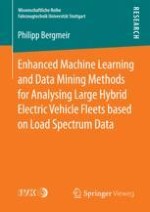2018 | Buch
Enhanced Machine Learning and Data Mining Methods for Analysing Large Hybrid Electric Vehicle Fleets based on Load Spectrum Data
verfasst von: Philipp Bergmeir
Verlag: Springer Fachmedien Wiesbaden
Buchreihe : Wissenschaftliche Reihe Fahrzeugtechnik Universität Stuttgart
